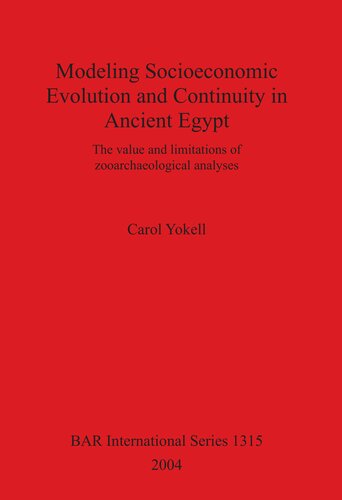

Most ebook files are in PDF format, so you can easily read them using various software such as Foxit Reader or directly on the Google Chrome browser.
Some ebook files are released by publishers in other formats such as .awz, .mobi, .epub, .fb2, etc. You may need to install specific software to read these formats on mobile/PC, such as Calibre.
Please read the tutorial at this link: https://ebookbell.com/faq
We offer FREE conversion to the popular formats you request; however, this may take some time. Therefore, right after payment, please email us, and we will try to provide the service as quickly as possible.
For some exceptional file formats or broken links (if any), please refrain from opening any disputes. Instead, email us first, and we will try to assist within a maximum of 6 hours.
EbookBell Team

4.3
18 reviewsThis work examines patterns of taxonomic utilization from a wide range of sites from different geographic regions and through several thousand years in order to contribute to an eventual understanding of the mechanisms by which disparate regional societies were subsumed into the unified Egyptian 'state.' An examination of the relative adaptability of cattle, sheep, goat, and pigs is fundamental to understanding the choices by humans for exploiting a particular species or its products in a given area. A predictive model was developed based on issues of economic and social production among modern societies utilizing these same domesticated taxa under similar environmental conditions. Five strategies were identified: nomadic pastoralism, semi-nomadic pastoralism, transhumance, agro-pastoralism, and ranching. Contrary to previous interpretations, pigs were shown to be well adapted to utilization by sedentary populations in both the southern Valley and northern Delta regions. The methods for the investigationof alternatives of social and economic production and intensification were closely linked to zooarchaeological analysis. However, in addition, faunal inferences were supplemented with evidence such as artistic depictions, Egyptian texts, and literature.